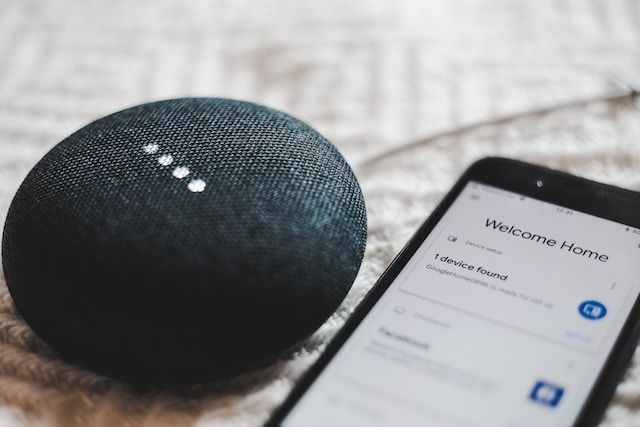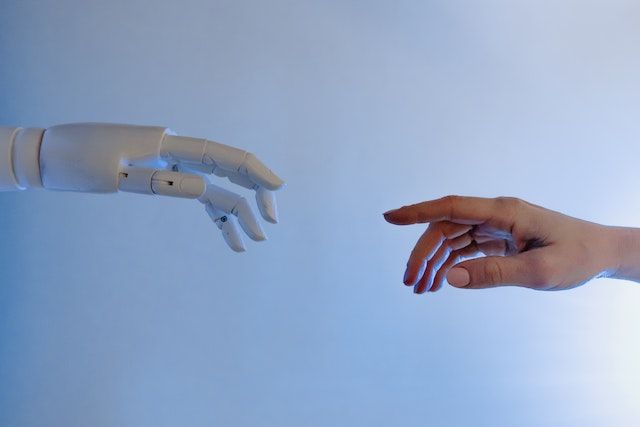Artificial Intelligence, or AI, is a field that has been steadily gaining momentum in recent years. From chatbots to self-driving cars, AI is quickly becoming an integral part of our daily lives. So as the working mechanism behind it is not quite understandable for many people, it’s not shocking that there are a lot of conspiracy theories.
First of all, differentiate the main types of AI (yes, not all types of AI can act out of a given exact simple task, not to mention conquering the world) :
-
Artificial Narrow Intelligence (ANI) - also known as weak AI, ANI is designed to perform a specific task or set of tasks. ANI is the most common type of AI and includes things like virtual assistants, chatbots, and image recognition software, including facial recognition. ANI can perform complex tasks but only within the specific goal it was designed for, and it cannot learn or adapt outside of that goal.
-
Artificial General Intelligence (AGI) - also known as strong AI, AGI is designed to have human-like intelligence and the ability to learn and adapt to new situations. AGI is still in the early stages of development and is a topic of much debate within the AI community.
-
Artificial Superintelligence (ASI) - ASI is a hypothetical form of AI that surpasses human intelligence and can improve itself beyond what humans are capable of. ASI is currently the subject of science fiction and philosophical debate, but some experts believe it could be possible in the future.
Artificial Narrow Intelligence (ANI)

ANI has commonly used applications like virtual assistants - well-known Siri, Alexa, and Google Assistant are becoming increasingly popular for their ability to understand natural language and perform easy tasks such as setting reminders, playing music, and answering questions.
Also, ANI is used in recommendation systems, for example, Netflix uses ANI to analyze a user's viewing history, as well as other data such as ratings and viewing habits, to provide personalized recommendations for movies and TV shows. The ANI algorithm used by Netflix looks at patterns in the user's viewing history and compares them to patterns in the viewing history of other users who have watched similar content. Based on these patterns, the algorithm provides recommendations for movies and TV shows that the user is likely to enjoy. The system also uses a technique called collaborative filtering, which looks at the user's viewing history as well as the viewing history of other users who have watched similar content. Collaborative filtering is used to identify similarities between users and to make recommendations based on those similarities. Overall, Netflix's ANI-based recommendation system is a powerful tool for providing users with personalized recommendations, helping them discover new movies and TV shows that they might not have otherwise found on their own.
And the third most common use of ANI is in image and speech recognition.
Image recognition involves using ANI to analyze images and identify patterns or objects within them. This technology is used in a wide range of applications, including security surveillance, medical imaging, and self-driving cars. ANI-based image recognition systems can analyze images in real-time, making them useful for tasks such as identifying traffic signs or detecting objects in a video stream. The first step in facial recognition is to detect faces in an image, once faces are detected, the ANI-based system extracts features from the face, such as the distance between the eyes, the shape of the nose, and the curvature of the lips. The final step in facial recognition is to match the extracted features to a database of known faces. ANI-based facial recognition systems use algorithms to compare the features of the unknown face with those in the database to find a match. You can take advantage on face recognition AI right now and test it by yourself!
You can take advantage on face recognition AI right now and test it by yourself!
Speech recognition, on the other hand, involves using ANI to transcribe spoken language into text. This technology is used in a variety of applications, including virtual assistants, dictation software, and language translation. ANI-based speech recognition systems can recognize spoken words with a high degree of accuracy, even in noisy or crowded environments.
Both image and speech recognition systems are based on deep learning algorithms that use artificial neural networks to identify patterns and make predictions. The neural networks are trained on large datasets of images or speech samples, allowing the ANI system to learn and improve over time.
As the technology continues to advance, researchers are working towards developing more advanced ANI-based image and speech recognition systems, with the potential to unlock even more possibilities in fields such as medicine, security, and communication.
Overall, while ANI is limited to specific domains and tasks, it can perform those tasks with a high degree of accuracy and efficiency, making it a valuable tool in various industries. As the technology continues to advance, researchers are working towards developing more advanced AI systems, such as Artificial General Intelligence (AGI), that can learn and adapt to new situations, potentially unlocking even more possibilities for AI in the future.
Artificial General Intelligence (AGI)

Artificial General Intelligence (AGI) refers to the hypothetical development of an intelligent machine that can perform any intellectual task that a human can. Unlike narrow AI, which is designed to perform a specific task, AGI is designed to be capable of learning and understanding any intellectual task that a human can.
AGI is sometimes referred to as Strong AI, as it is designed to be as capable as a human being in terms of intellectual ability. Some experts believe that AGI could be achieved in the future, while others believe that it is not possible. AGI is an area of ongoing research and development, with some companies and organizations investing significant resources into its development. However, the development of AGI remains a challenging and complex problem, and it is unclear when or if it will be achieved. At present, there is no known example of a true AGI, as the technology is still purely hypothetical. However, there have been various attempts to create AGI systems in the past, with varying degrees of success.
Artificial Superintelligence (ASI)
the third type of AI - ASI - is still just imaginary and unreal. It’s a theoretical concept where machines are designed to become self-aware and self-vigilant to the extent that they can surpass the capacity of human intelligence and behavioral ability. In other words, ASI aims to create machines that can think, reason, and learn like humans, but with intelligence and cognitive abilities far beyond what is possible for humans. This level of intelligence could potentially enable machines to solve complex problems, make decisions and predictions that surpass human capability, and even generate new ideas and innovations. ASI could potentially solve some of the world's most complex problems, such as climate change, disease, and poverty.

However, the development of ASI also raises significant ethical concerns. An AI system that is more intelligent than human beings could potentially pose a threat to human civilization if it is not carefully designed and controlled. There is also the risk that ASI could lead to the creation of machines that are out of human control, potentially leading to unintended consequences that could be difficult to reverse.
But for now, all the debate is just hypothetical and will stay hypothetical in the near future. Nowadays we have commonly used ANI, AI which is task based, can not leave borders set by a developer and acts only according to script. Most of the time it’s quite helpful and can do easy day to day tasks. Still, there are a lot of biases about AI. We will try to cover the most popular ones in the article “Exploring Common Biases about AI: Myths vs. Reality”.
Meanwhile, you can check out our facial recognition search AI - Pimeyes (definitely not ASI 🙂) and find out if your photos are published on the internet without your consent:
Use PimEyes to find out if someone has used your photo to create a fake profile






